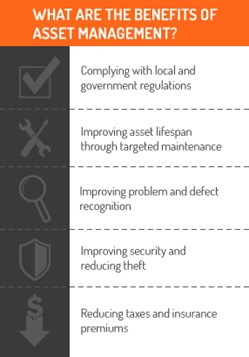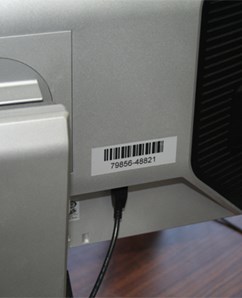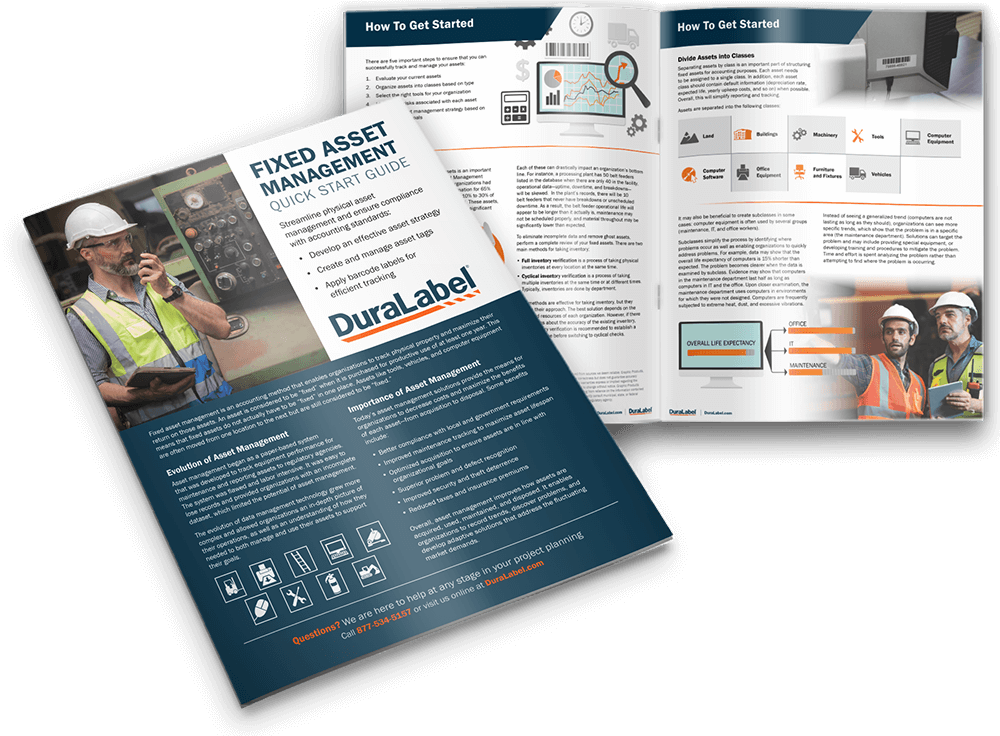What Is Asset Management?

Asset management is an accounting method that enables businesses to get the most out of their assets. Historically beginning as a paper-based system and evolving into a digital-based system, asset management enables businesses to efficiently track and manage their property.
Asset management has become a science of making decisions and optimizing the delivery of value. A common objective includes minimizing the whole life cost of assets, while balancing potential risks connected to owning the assets.
Current vs. Noncurrent Assets
While there are many different types of assets and asset classes, assets are generally separated into two main classes: current assets and noncurrent assets.
Current assets: Any company asset that will be turned into cash within a one-year time frame is considered a current asset. This includes currency, temporary investments, inventory, supplies, and prepaid expenses. For accounting purposes, classifying supplies and prepaid expenses as current assets help companies avoid paying cash for them the following year.
Noncurrent assets: These assets are any items that are unlikely to be turned into cash within a single year. Otherwise referred to as long-term assets, these include long-term investments, property, buildings, equipment, tools, vehicles, furniture, spares, and other intangible assets like trademarks and copyrights.
 What Are the Benefits of Asset Management?
What Are the Benefits of Asset Management?
Today's asset management solutions provide the means for organizations to decrease costs and maximize the benefits of each asset. Other benefits include:
- Complying with local and government regulations
- Improving asset lifespan through targeted maintenance
- Improving problem and defect recognition
- Improving security and reducing theft
- Reducing taxes and insurance premiums
By improving how assets are tracked, you will be able to optimize how your company uses its assets. Previously unnoticed maintenance issues, overpaid taxes, and overspending can be quickly identified and eliminated by ensuring that assets are acquired, maintained, and disposed in a manner that benefits your company the most.
Who Benefits?
Any business, no matter what field, can benefit from asset management. Whether you work in education, law, manufacturing, or IT, asset management can help you improve how your assets are used and maintained.
Law Firms: Venable LLP, among the oldest law firms in the country, provides an excellent example of how companies can benefit from asset management. Venable streamlined their fixed asset management program by moving to a digital platform using barcodes and a centralized database. They eliminated errors caused by manual inputs; moreover, they were able to determine which assets they should buy (computers) and which assets they should lease (industrial printers), reducing both costs and risks.
Non-Profit Agencies: Child Care Resources also needed a way to regain control and reduce yearly asset-related expenses. In 2015, the agency switched to a digital asset management system which used barcodes and a central database. Using this system, they reduced costs related to funding and category code mistakes by 40%. They also greatly reduced their insurance premiums because they eliminated ghost assets (assets that no longer exist).
(Source: E-ISG Asset Intelligence Asset Management)

The best part is, you can download a roadmap to take control of your company's fixed assets, with the Fixed Asset Management Quick Start Guide by DuraLabel. Reduce mistakes, improve maintenance cycles, and eliminate excessive asset expenditures.
Asset Management Solutions
Make sure you have the right tools to get your asset management system underway. Graphic Produces offers an array of label printers and labeling supplies, so you can create asset tags for all your physical assets. Import asset data directly to DuraLabel Toro Max and print barcodes onsite with an optional lithium ion battery.
With a DuraLabel printer, you can print more than barcodes. Create custom safety signs for your entire site, improving safety and increasing OSHA compliance. Ensure your workers know how to perform those tricky operation and maintenance steps by posting signs right next to the equipment. Get started with Fixed Asset Management with our free guide below. Download it today.
Related Resources

The Benefits of Asset Management Explained
Asset management is a system that helps you track your property and maximize the return on those assets, ...
Read
Asset Tags and Their Role in Asset Management
What Are Asset Tags? Asset tags are one of several tools needed for a successful asset management system. ...
Read
Asset Identification
For Want of a Nail Even when a small, low-value item is missing, it can result in major impact on your ...
Read.png)





